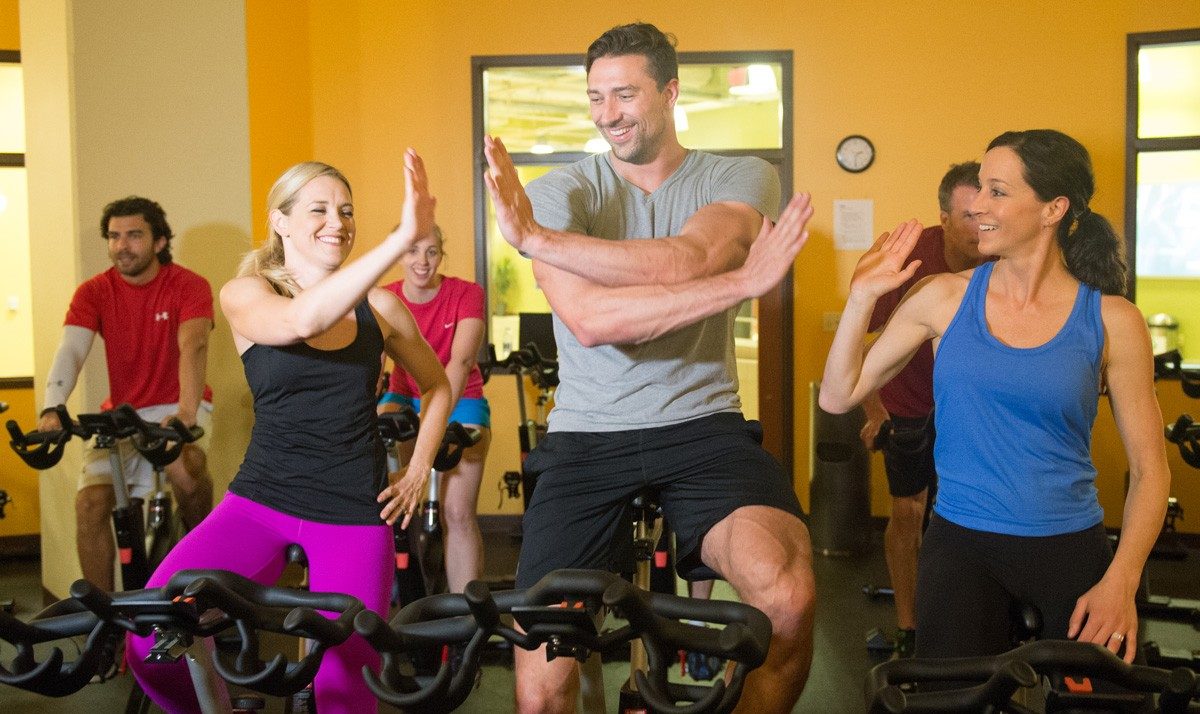
5 Steps to Create A Smart Exercise Plan That Gets You to the Finish Line
See if this sounds familiar: you’re a dedicated member of your athletic club, go 4 or 5 times a week, do an hour of free weights followed by another 45 minutes on the treadmill…and nothing. You’re just not seeing the results you expected. So, what’s the problem?
DO YOU HAVE A PLAN?
The problem might be you don’t have an effective exercise plan. Without a plan, your workout routine is going to take longer, waste time and produce less than stellar results. Think of it this way – if you don’t have an exercise plan, you’ll probably finish one exercise and stand around trying to figure out what to do next. Multiply that by several exercises and before long you’ve wasted a lot of precious minutes. But a sound exercise plan is about much more than simply lining up all your activities to save time. It also means knowing how often to exercise, how to avoid burnout, exercising your whole body and setting realistic goals.
SO, HOW DO YOU PUT TOGETHER A SMART EXERCISE PLAN?
No two people are alike, and everyone has a unique set of fitness goals that requires a different routine. That said, the most effective exercise plans have a few things in common, including the following 5:
1. SEEK EXPERT ADVICE
Fitness instructors and personal trainers can give you advice and guidance on how to design the best exercise plan to meet your fitness goals. As the American Council on Exercise points out, an experienced instructor will:
- Help you create a plan that exercises your whole body
- Give you the motivation to meet your goals
- Increase your confidence level
- Hold you accountable to do what you plan to do
- Help you avoid injury
- Help you design a sport-specific plan
- Give you the individual attention you need
2. SET REALISTIC GOALS
Planning to lose 30 pounds in 30 days just isn’t smart – and it could be dangerous. Whatever your fitness goals, they need to be reasonable and realistic. This is another place where an expert instructor can help. He or she will tell you (based on experience) what makes sense and what does not.
3. HAVE A PLAN THAT AIMS AT WHOLE BODY FITNESS
Ever see someone at the gym whose upper body is in great shape, but whose legs look like they need a lot of work…or someone who can bench 300 pounds but has no endurance? The best exercise plans include both weight training and cardiovascular health – and they target all parts of the body, including your core, upper body and lower body.
You should also focus on different parts of the body on different days. This will give the muscles in the other parts of your body time to recover.
4. FOCUS ON CONTINUOUS IMPROVEMENT AND SMALL ACHIEVEMENTS
Establishing realistic goals also includes knowing how long it should take you to get to the finish line. That also means you should know where you need to be at every point along the way. When you’re not making the progress you should be, you need to tweak your plan (again, getting some good advice from a trained fitness instructor) to ensure you’re continuously improving.
It’s also important to create a plan targeted to small, incremental accomplishments. Every small step you take is one more step towards achieving your goals, and each one increases your confidence and motivates you to push forward.
5. INCLUDE REST AND RECOVERY DAYS IN YOUR PLAN
Multiple studies have shown that allowing your body to rest (in the right way) is just as important as your workout. One of those studies from the University of Michigan concluded:
“Athletes understand the importance of exercise training for optimal performance and improvement. However, rest and recovery is also an important aspect of an exercise program because it allows the body time to repair and strengthen itself in between workouts. It also allows the athlete to recover, both physically and psychologically.”
Your plan should include an effective combination of (1) workout days, (2) “active recovery” days (these are days when you keep moving and repair muscles), and (3) rest days. On workout days, you do your full gym routine. Active recovery days should include activities like a long walk or swimming. And of course, rest days are for rest.
One of the biggest exercise mistakes is trying to do too much too soon. The fact is, active recovery and rest days, far from slowing down your progress, will help you reach your goals faster and prevent burnout.
CONCLUSION
A smart exercise plan will get you to your goals faster and more efficiently, improve your mood, motivate you and increase your confidence level, but it can be challenging to do on your own. Fortunately, there are exercise and fitness experts who can give you the advice and guidance you need.
At our clubs, our fresh take on fitness focuses on the whole body and helps you achieve your individual fitness goals with dedicated studios, on-site massage and an expert team. To get started, talk with one of our expert trainers today.